Pinocchio lights
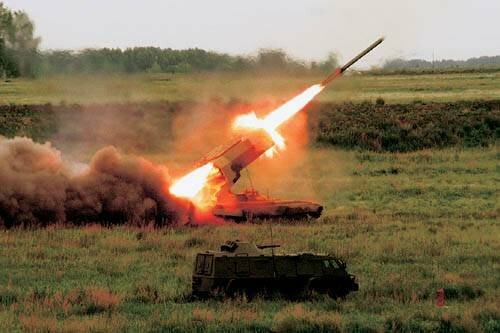
There is an amazing Russian army weapon - heavy flamethrower system TOC-1 "Buratino". Promotional materials of Rosvooruzhenie claim that its salvo destroys all living things within a radius of 3 km.
Human rights activists called these vehicles the envoys of hell and attributed to them the mass extermination of civilians. Moreover, the absence of witnesses to such crimes did not embarrass anyone - it is said that everything living within a radius of three kilometers means that it is so. From the witnesses - only a handful of ashes. But why does nobody produce such an effective weapon except us, and in our army “Buratinas” are counted in units? Popular Mechanics decided to bring some clarity.
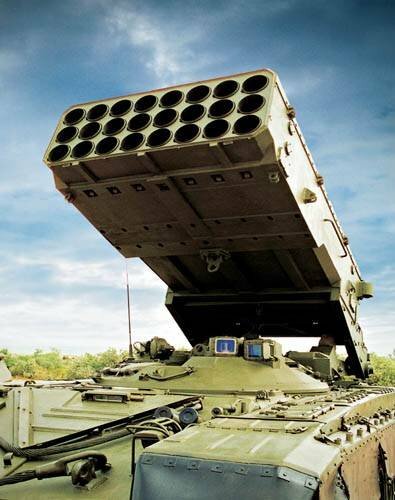
Chemists Weapons
In 1980-s, the success of Soviet gunsmiths in the development of thermobaric and detonating ammunition made a strong impression on domestic military leaders. No wonder - the undermining of a sufficient amount of ammunition externally produced the effect of a small tactical nuclear charge. Almost all branches of the military wanted to adopt such an effective weapon. For infantry began the development of jet flame throwers "Bumblebee". The Main Artillery Directorate issued an order for the design of thermobaric combat units for multiple rocket launchers. The Air Force began to create a detonating aerial bombs ODAB-500. But the troops of radiation, chemical and biological protection (RCBZ) decided to acquire their own heavy flamethrower system TOC. Why chemists need such a system, we do not know for sure, but there is information about the development of various warheads, including those with binary-type toxic substances.
The creation of a new weapon The Office of the Russian Chemical Safety Factory entrusted the tandem - the Omsk Design Bureau of Transport Engineering, famous for its tanks T-80U, and Motovilikhinsky factories, from the gates of which multiple rocket launchers Grad, Hurricane and Tornado emerged. The factories justified the trust, and such an installation was created. The first option was simply called TOS, and the second, TOS-1, was playfully called "Pinocchio."
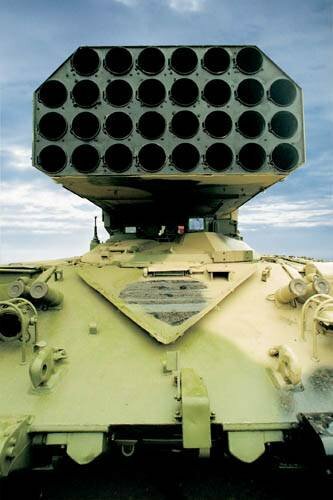
How does the "Pinocchio"
Externally, the TOC-1 looks like the main battle tank T-72, the turret of which is replaced by a package of guides containing the increased ammunition - 30 missiles (TOC had an 24-pipe package). Each rocket caliber 220 mm equipped with ODBCH (volume-detonating warhead). In contrast to rocket launcher systems, most of the length of the TOC missile is occupied by the warhead, and not the engine - there is no need to shoot for ten kilometers. Depending on the modification of the rocket, the firing range is from 2700 to 3500 meters. The launcher is located on a turntable. The crew makes setting the target at a target, using a laser range finder and a ballistic computer, providing acceptable accuracy. The fire can be fired by single shots, a “doublet” of two barrels and a series with a quarter-second interval between shots, with all 30 missiles being launched in just 7,5 seconds. The destructive power of the Buratino missiles is amazing - brick buildings lurk in a cloud of smoke and flame, resembling a small nuclear mushroom, and when the smoke clears, only smoking ruins appear. One can only guess about what remains of the enemy entrenched in the fortifications.

Fighter invisible front
For a long time "Buratino" was a top-secret weapon, although the installation took part in the Afghan war. However, after in March 2000 of the year the television replicated the work of TOC-1 in Komsomolskoye village around the world, the “secret” heading was removed from the installation. Such a bright appearance immediately gave rise to a lot of legends, including the most ridiculous. Say, TOC was developed for the "burning out" of areas affected by biological warfare.
In fact, the TOC-1 entered the engineering troops as a means of destroying a hidden enemy, which traditionally was the task of the sappers. Covered with anti-bullet armor, "Buratino" can go to the firing point at a direct shot range and destroy it with several missiles. The tank chassis allows the 46-ton car to have mobility comparable to tanks and infantry fighting vehicles.
However, a heavy flamethrower system is not a miracle weapon at all, as, indeed, any other model of military equipment. The large size and relatively weak booking make the car vulnerable to grenade launchers, anti-tank missile systems, rapid-fire guns. The defeat of the launch package can lead, if not to undermine the combat units, then to the spontaneous launch of missiles. Chaotically flying missiles are capable of causing a lot of trouble for their own troops. That is why in Chechnya, the installations worked strictly under the guise of tanks (1 – 2 in front and one from the sides) and after the “Buratino” salvo immediately crawled to the shelter. But the labor of flamethrowers has never been easy. The actions of TOC-1 in a combat situation just resemble the tactics of fighters who secretly match with a knapsack flamethrower to the bunker.
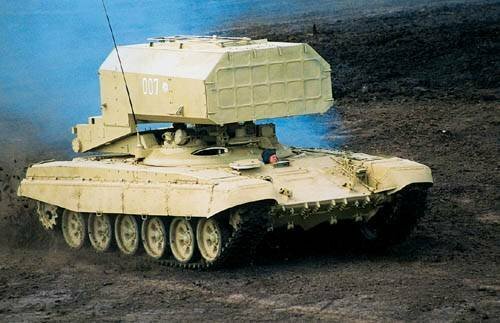
Piece thing
The exact number of “Buratin” in the army is unknown to us, but their number is measured in units. Why is such an effective weapon not being mass produced and not in demand on the foreign market? The fact is that the lot of “Buratino” is participation in local conflicts and counterterrorism operations. But just for such operations not flame throwers are required, but high-precision “surgical instruments” that minimize civilian casualties. With the full-scale hostilities, Buratino completely loses, for example, the MLRS Smerch, capable of sending 38 missiles with an 12-kilogram thermobaric warhead 100 kilometers in just 90 seconds.
TOC-1 ("634 Object")
Combat vehicle (BM) of multiple rocket launcher
The combat vehicle (BM) of the multiple launch rocket reactive system (MLRS) contains the base chassis of the 1 tank while preserving the design and mutual arrangement of the components and mechanisms of the power plant, transmission, and the driving and driving unit compartment. The 1 launcher (PU) is mounted on the 2 chassis, including the 3 rotary platform (PP) with 4 remote brackets, on which the 5 transport and launch container (TPC) 6 with the XNXX launch axes XNXX bearing axes XNXX are mounted on the axles of the XNUM axles and XNX support axes. In order to reduce the high-altitude dimensions of the BM (compared to TOC-7), the TPK 8 is extended and made with a three-row arrangement of 1 launch tubes (total 6), which are made with the ability to launch at least two types of 7 missiles in terms of energy capacity. The PP is fixedly connected to the 24 running unit of the tank’s running device and, together with the 8 chassis body, forms a fighting compartment, inside which the 9 power drive equipment, the 1 horizontal guidance drive mechanism (GN), the 10 drive station, and the 11 drive station, are fixed. and 12 commander, 13 remote control with PU pointing drives, 14 sight, 15 rangefinder, 16 commander monitoring device with optical input windows out. The gunner's 17 hatch, the commander's 18 hatch and the commander's 19 turret are fixed on the outside of the hull. The 20 device with the 21 hydraulic cylinder connected to the 22 hydraulic system of the tank for locking TPK in the transport position is mounted along the axis of the PP. And to ensure the stability of the BM during firing, the 23 chassis hull stern housing is fixed through hinges 24 outriggers with 1 hydraulic drives connected to the hydraulic system and the 25 hydraulic support is mounted on the front of the 26 chassis housing and the 27 launch chucks on the front of the chassis 1 productions smoke screen.
At the end of 70-x, the idea arose of developing a heavy reactive flame-thrower of volley fire, with warheads filled with incendiary and thermobaric mixtures. Such a complex, including a combat vehicle — a launcher, NURSs, and a transport-loading vehicle — was created at the beginning of the 80s. in Omsk Transport Engineering Design Bureau and received the name TOC-1 (heavy flame thrower system). The experience of the combat use of TOC-1 in Afghanistan and Chechnya showed its high efficiency and determined the directions for further improvement of the system. In Chechnya, TOC-1 was used in the assault on the city of Grozny and the village of Komsomolskoye.
Heavy flamethrower system "TOC-1", designed for complex target destruction due to high temperatures and excessive pressure. The TOC-1 can move in combat formations of motorized infantry and tanks, hit the enemy's attacking manpower from open and closed firing positions. The composition of the TOC-1 includes the MLRS combat vehicle, made on the base chassis of the tank, which contains a launcher (PU), including a turntable (PP) with remote brackets, on which a transport and launch container (TPK) is fixed through the axles of the trunnions and support brackets guide tubes for Nurs. Targeting PU at the target in the horizontal and vertical planes is made by power follow-up drives from the MSA, consisting of a sight, a quantum rangefinder (CD), a ballistic calculator (BV) and a roll sensor.
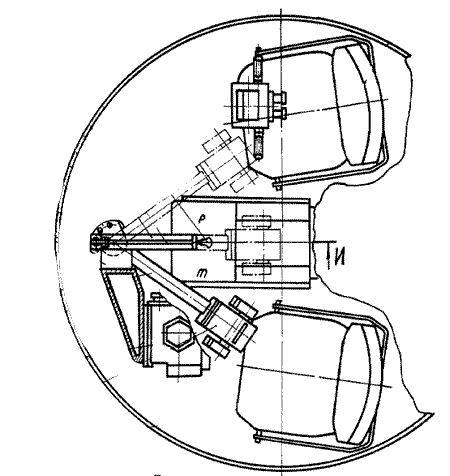
Improving the tactical and technical characteristics of TOC is carried out by improving its design. The roll and trim sensors connected to a ballistic computer (BV) are introduced into the fire control system, and a swinging panoramic sight is used as an optical sight, on the reflector of which the sensor of the total angles of the PT and target elevation angle connected to the BV is fixed, and on the gear differential leveling the sight and entering the vertical guidance angles into the sight additionally fixed an adder (sensor) of the target position angles, aiming and trim PP, which is connected to the electro-hydraulic drive system vertical guidance (HV), the electrical outputs of the BV and the sight are connected to the electro-hydraulic system of the HV drive through the mode switch, while the HV drive, the PU and the feedback sensor are connected in series, and the feedback sensor is in the form of a receiving device, rigidly fixed on the hub of the extension bracket PP, and its output shaft through the intermediate shaft and the connecting device is connected with the hub of the support bracket TPK ..
General view of TZM (front and top view)
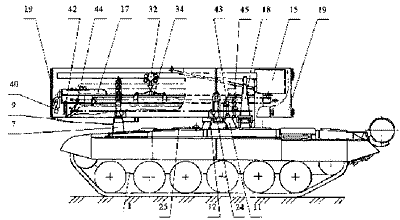
On the top nose plate of the 1 chassis body, 7 brackets are welded under the front 8 cradles and the 9 frame for attaching protection and 6 flooring.
The equipment includes: 10 removable roof, 11 felling, 12 brackets, 13 rear cradles, 8, 13 cradles with their fasteners, 15 boom crane with 16 retractable column, 17 tray with a dispenser and its fasteners in transport position 18 alignment mechanism with guides for its installation, 19 external equipment armor protection with its fastening elements, 20 hydraulic system, 21 electric pump unit, 22 electric equipment.
The machine is made on the base chassis of the tank used as the PU base chassis; in the car, the commander's and operator's workplaces are located in the middle part of the chassis, covered by a removable roof with a hatch and wheelhouse with viewing devices, and a central rectangular opening is made in the frame floor between Elongated along the axis of the machine above the crew hatches, while the cradles are installed to ensure fixing the laying of ammunition with the head of the shells in the direction of the nose of the machine, and the crane and crane equipment are mounted on the frame the possibility of loading the launcher with moving ammunition shells forward while the machine is moving and locking the boom of the crane in the stowed position between the lodgings at a height below the upper edge of the sides and equipped with a two-speed hydraulic drive with an accelerated idling mode in comparison with the working stroke mode, and the sides of the frame are made of armor plates and are equipped with a cable blocking device used to lift the hinged sides when the machine is moved from the working to the transport position, while the side boards are articulated connected with shields located between the front and side sides folded back into the working position and fixed with the front side, and the tailgate is made in the form of two figured flaps connected to the frame through vertical hinges, in addition, the shields can be provided with retainers, and on the lateral ends the front side of the brackets are rigidly fixed with grooves for the fingers of the said clips, and additional fuel tanks are installed in the middle part of the chassis body in front of the partition of the engine compartment.
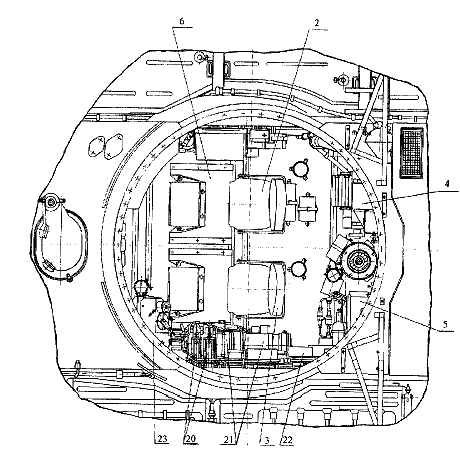
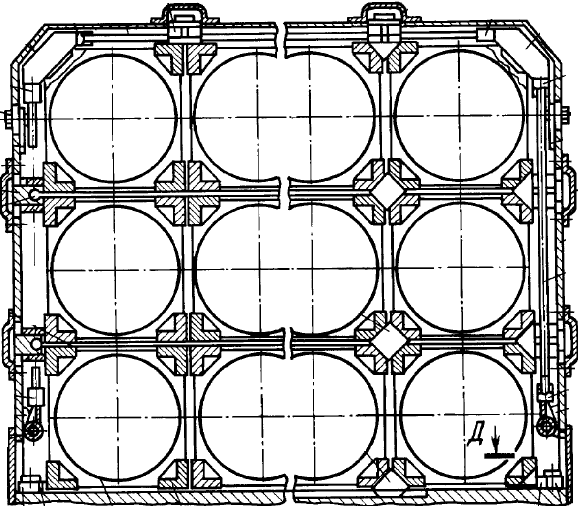
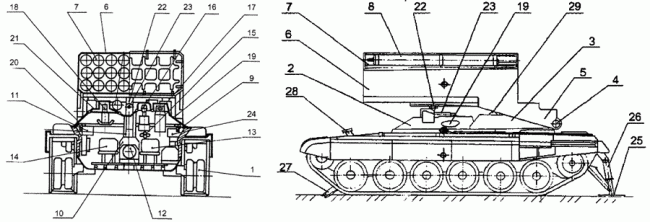
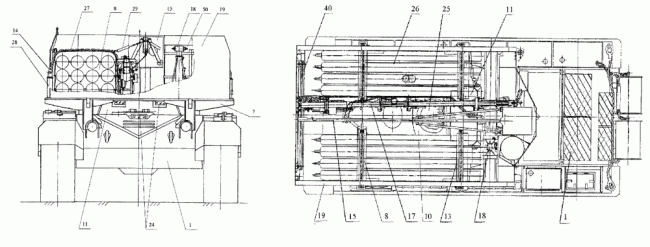
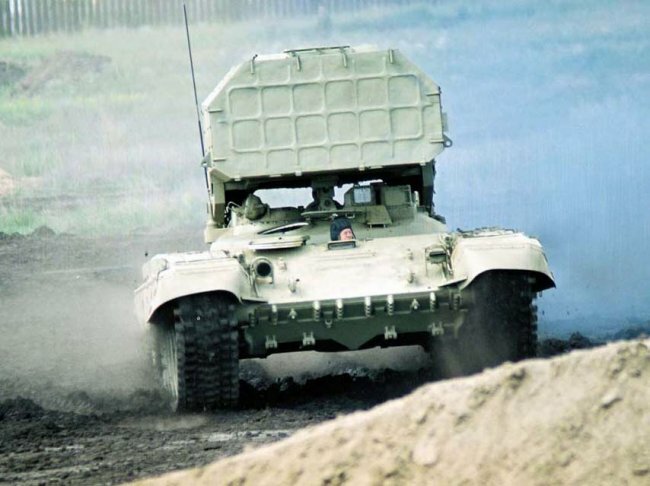
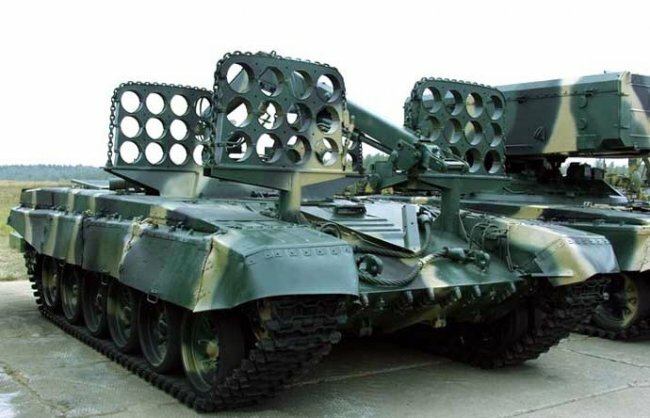
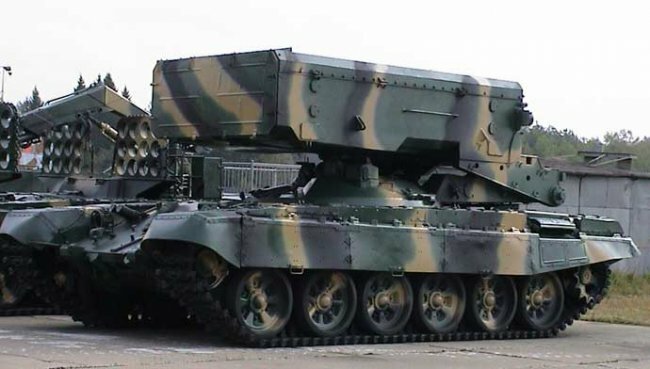
Information